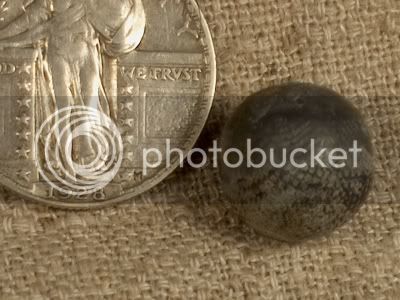Black Hand said:
A bullet that stays inside your deer has done EXACTLY what it should. It is supposed to expend all its energy inside the deer, killing by shock and blood-loss rather than punching through and the energy expended elsewhere.
Not quite that simple...this "inside" vs. "pass through" has it's roots in the high speed centerfire cartridge world, not patched round balls from muzzleloaders....not trying to initiate a debate on the subject of "inside stops" vs. "passthroughs"...just clarifying this notion of "dumping all energy inside" and why "inside stops" are actually not preferred in the muzzleloading world.
There are far greater benefits to a "passthrough" than an "inside stop" because the expanding soft lead ball has plowed through the maximum amount of vital organs across the full width of the body cavity and left two good holes for blood trailing if such a trail is needed.
The cloud over the theory that a ball which stops inside the cavity "dumps" all it's energy inside is this: "it really simply just means that the ball was not going fast enough to make it all the way across...and slowed down / ran out of energy somewhere inside and came to a halt".
Example comparisons:
I'm sure anyone would agree that a round lead ball stopping 3" inside the cavity cannot possibly do as much damage as one that goes through 6" of vitals before stopping...but they both stopped inside and "dumped all their energy".
Continuing that thought process, a ball stopping 10" across the body cavity has done significantly more damage to more vitals than one that stops in either of the previous 3" or 6" examples.
It also cannot be argued that that a ball which goes even further, stopping just bulging the hide on the far side...has made the longest wound channel, had the greatest amount of expansion, and has done the greatest amount of damage...compared to the previous 3", 6", or 10" examples by plowing through ALL the internals across the width of the body cavity that it traveled through...and again by definition dumping maximum energy inside.
All that remains then for a "ball that stops under the far side hide" is for it to have enough velocity/weight to penetrate the full width and then actually exit the far side hide, providing another outlet for blood loss/tracking if required.
A round ball plowing completely through / tearing up a full cavity width of muscles, organs, arteries, tissue, etc...and then exiting the far side hide will do significantly more destruction than one which is going so slow it simply slows down and stops only 25% of the way across...or 50%, or 75%. Yes, it can be said that in those cases the balls 'dumped all their energy inside" but it’s only because they didn't have enough energy to begin with.
A modern analogy is like a car going so slow that when it hits me it stops ('dumps all its energy') after crushing my bumper...vs...one hurtling through an intersection and T-bones my car, cutting it in half and killing everybody inside.





